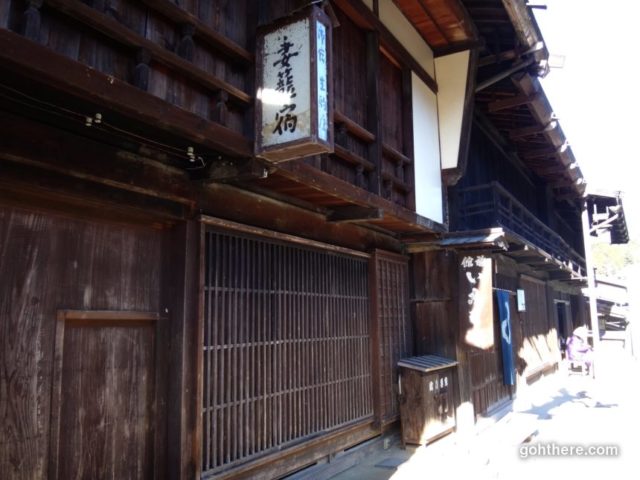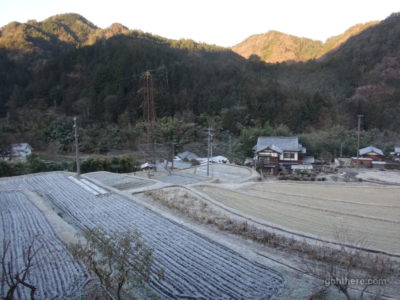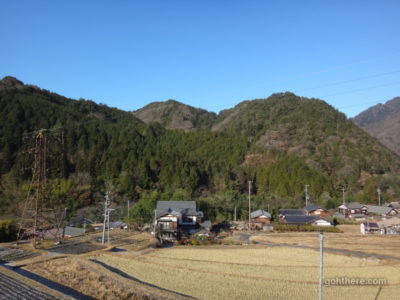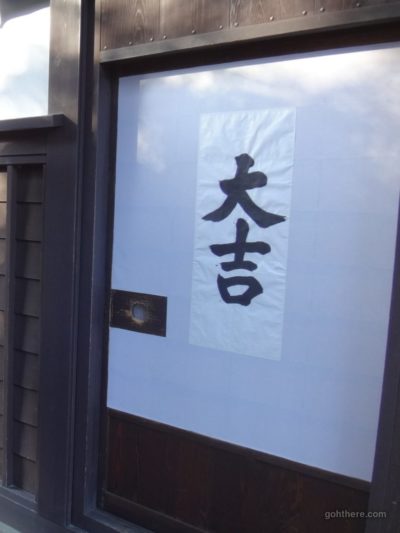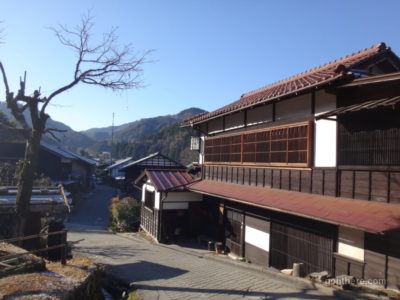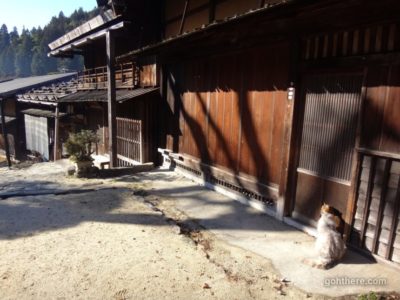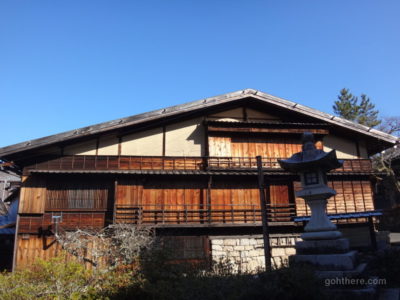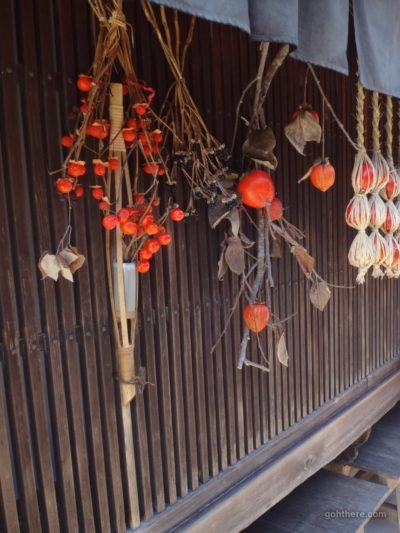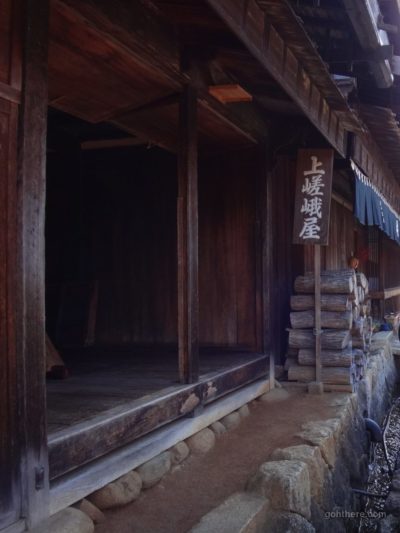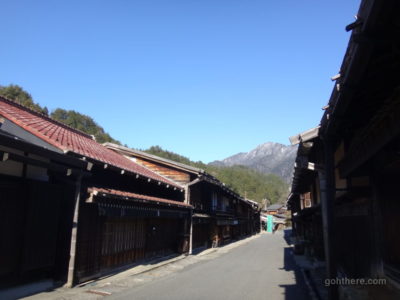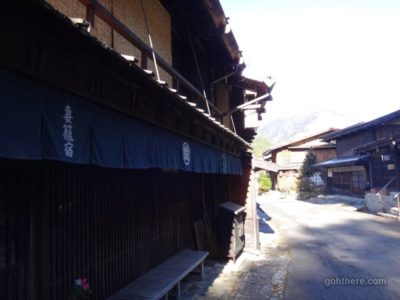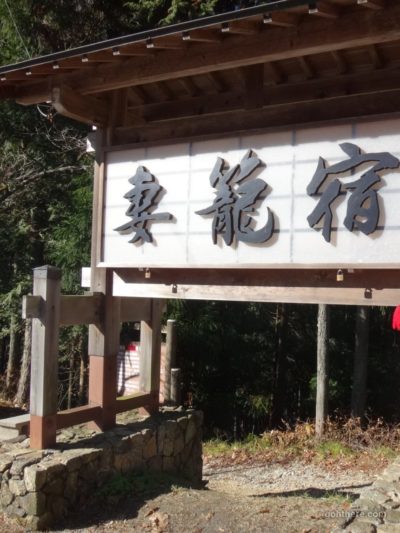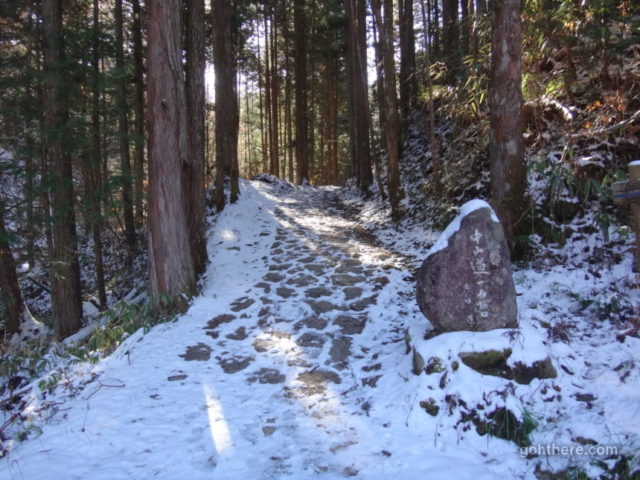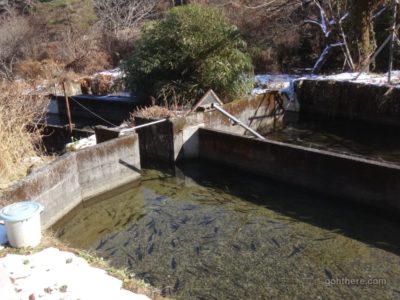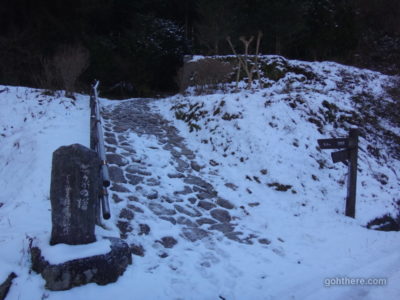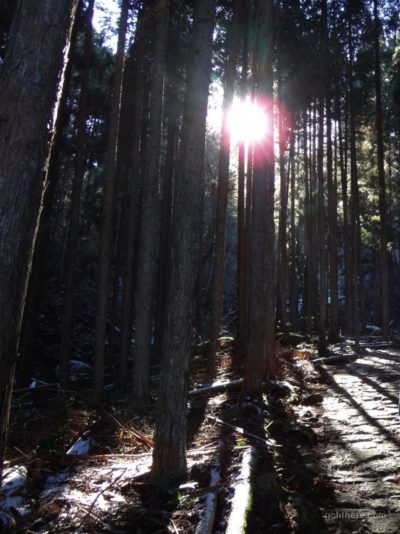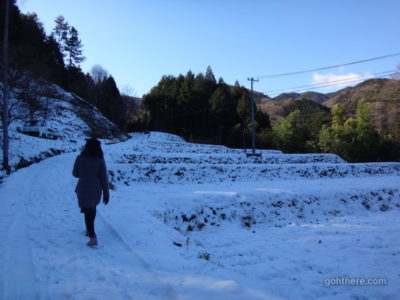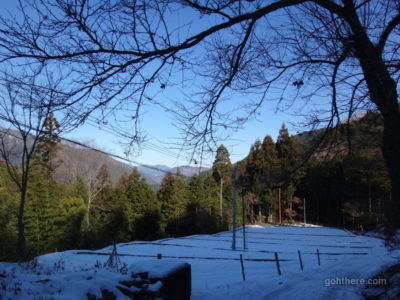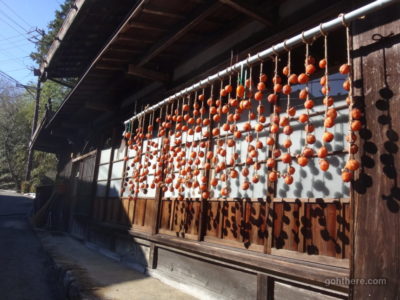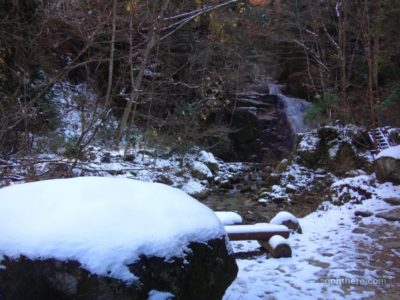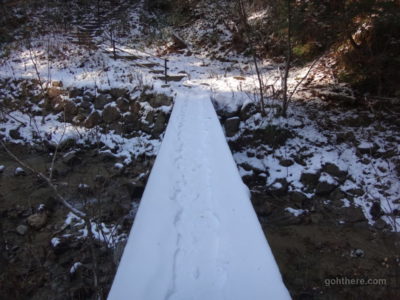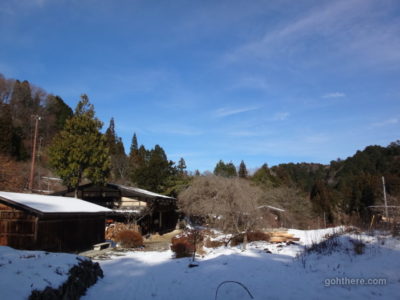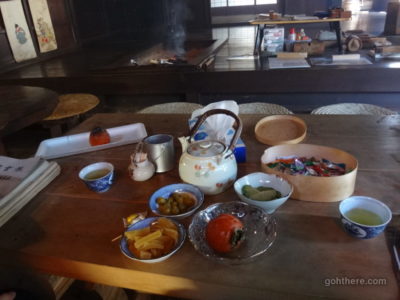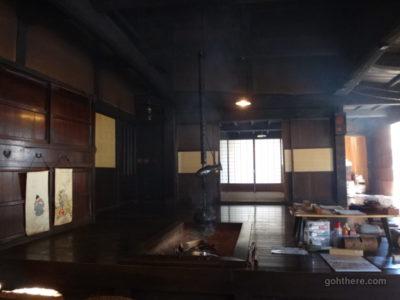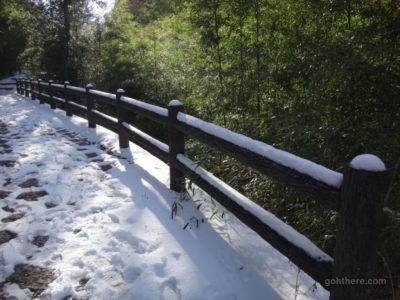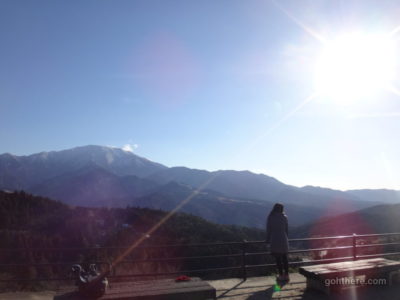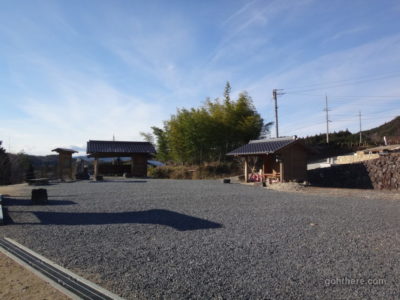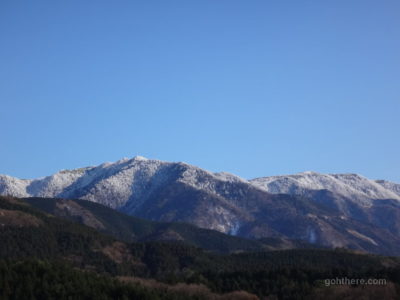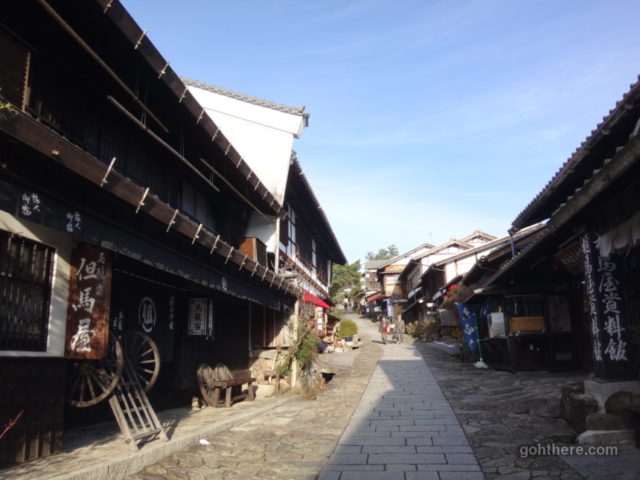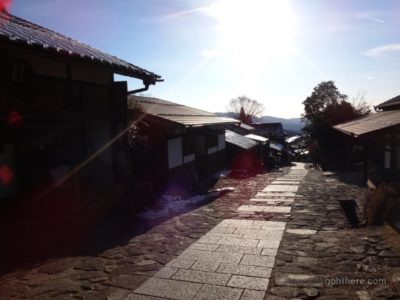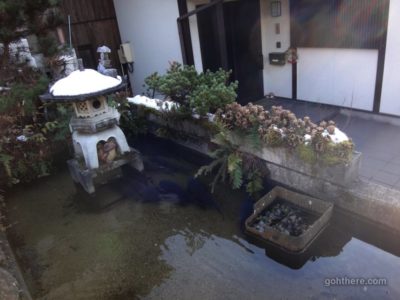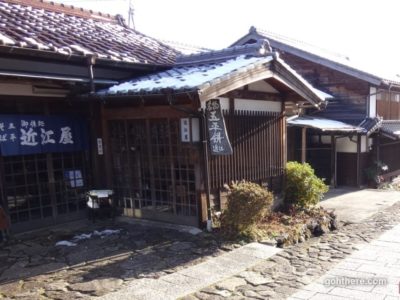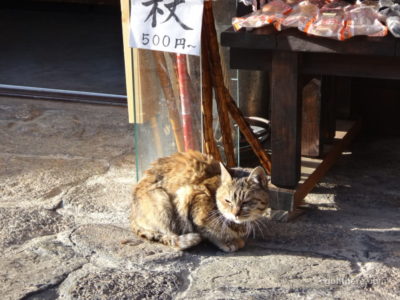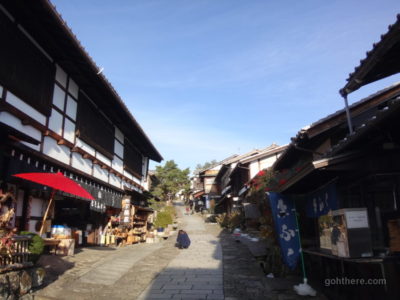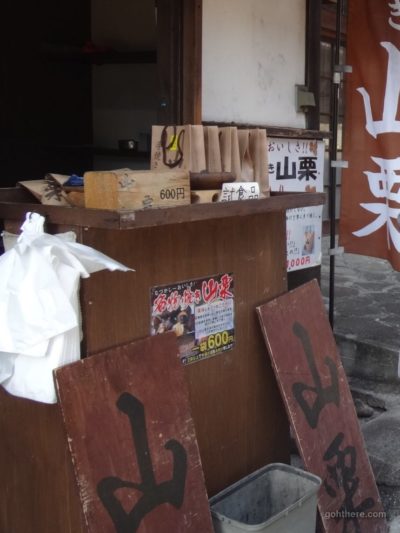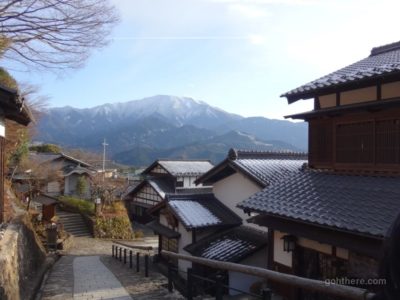Tsumago-juku (妻籠宿)
After an enjoyable stay at the guesthouse in Tsumago-juku, we departed in the morning to explore the area. The village streets were all lined with traditional wooden houses, and just like the guesthouse we stayed at, they are not just for display and people are still living in them. Of course, the interior is modernised, but great care was done to keep the outside looking as if in ancient times.
- Frost-covered fields in the morning.
- Breakfast. The miso on the little stove on the top right was excellent to go with rice.
- A very nice day. The sun soon melted the frost.
- Front door of guesthouse Daikichi (大吉). Departing to start the day’s travel…
- Some kind of dried vegetables hanging outside of a house.
- Streets are pretty much empty. Winter is low season here; there would be a lot more visitors during warmer seasons.
- Sign board next to the Tsumago car park.
Hiking over the Magome Pass (馬籠峠)
The hiking course from Tsumago to the next post town Magome is just about 10 km, it follows pretty much the same as the ancient Nakasendo route, and on the way there are the occasional sign boards explaining the history and information of the particular place. The course is pretty interesting and varied, passing by local village houses, woodlands, and some good vantage points. Before reaching the destination of Magome, it goes over the highest point at the Magome Pass (馬籠峠). Having said that it’s a very gentle climb, and overall you can treat it as a leisurely walk.
- We took plenty of detours on the way. Here we came across a fish farm.
- Still a lot of snow from earlier.
- On the back are two waterfalls – one larger and one smaller. They’re named “man and woman falls” (男滝女滝)
- Before the climb to Magome Pass, there’s a free rest house for the hikers. The locals take shift here to welcome visitors. It’s amazing to know they do this to keep the tradition like in ancient times when people did travel a long way on foot.
- The very kind old man there no only served us tea, but lots of other snacks too.
- Fireplace to give some warmth.
- Observatory with view of Mount Ena (恵那山)
- Mount Ena (恵那山)
Magome (馬籠)
Magome is a pretty village, and its main street is a particularly nicely built stone walkway. But compared with Tsumago I felt it is relatively more tourist-oriented with mostly restaurants and souvenir shops.
- Sunbathing cat
- A store selling roasted chestnuts. Very tasty.
- View of Mount Ena from Magome
- Seems a lot of chestnut-related things here. We had a chestnut dessert at a restaurant. Nothing to write home about. The simple pack of roasted chestnuts was way better.
Nakatsugawa (中津川)
From Magome, we took a local bus (very infrequent) to Nakatsugawa, the largest town in the area. Relative to the villages in Kiso Valley that is – but at least large enough to have an Aeon shopping mall (a large chain in Japan).
To save on train fare, we booked express bus instead for our return trip back to Tokyo. Nakatsugawa is one of the stops, but apparently it’s too minor a place, the bus stop is not at the Nakatsugawa train station in the town centre but the Nakatsugawa Highway Interchange on the outskirt of town. I only realised it on the day, so we had to take a taxi first to get to the bus stop! Still, I think it still worked out cheaper overall.
- It’s almost Christmas time!
- Curry udon noodles with cutlet. This is a chain called Wakasachiya (若鯱家) that is mainly based in central / western Japan, so there aren’t many in Tokyo.
